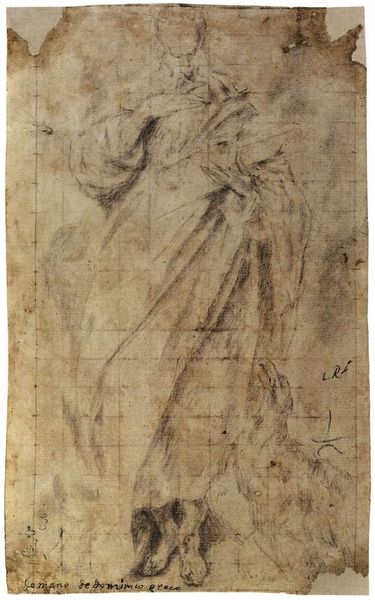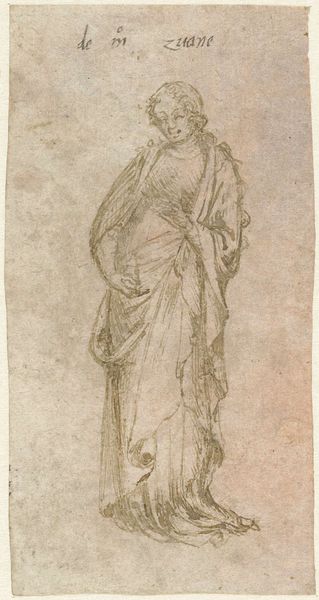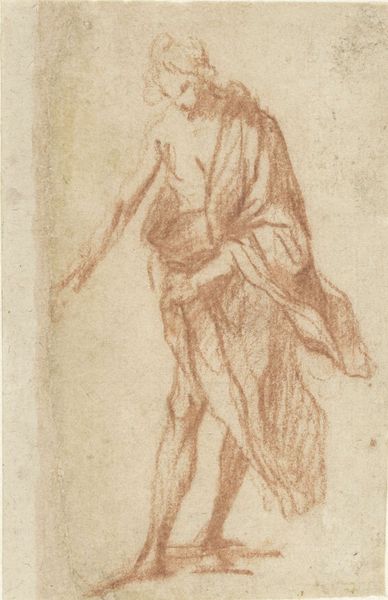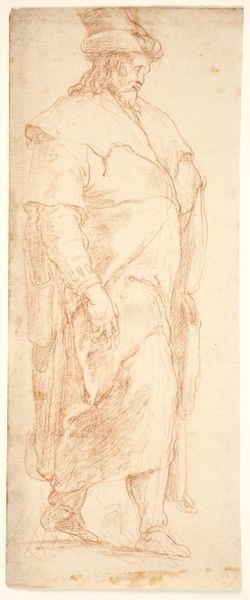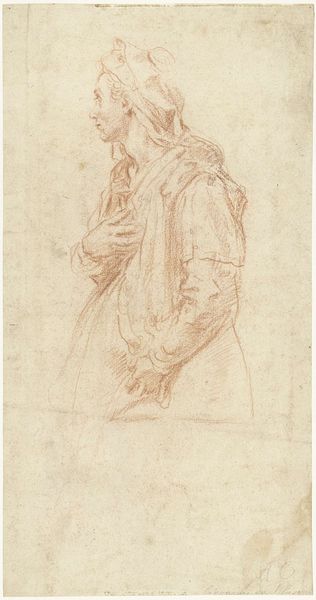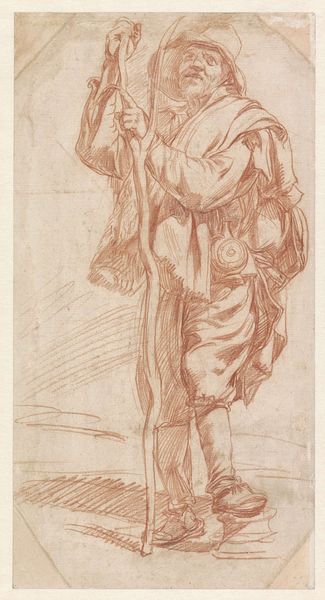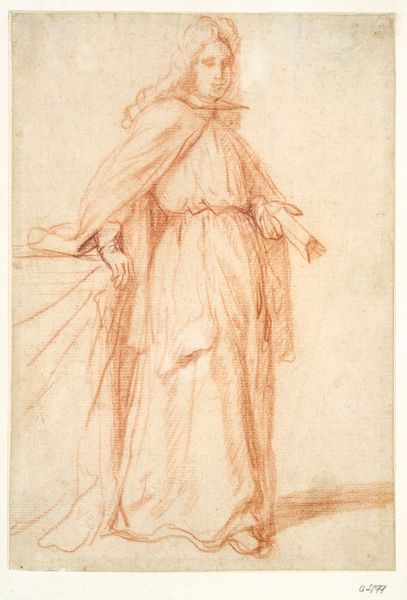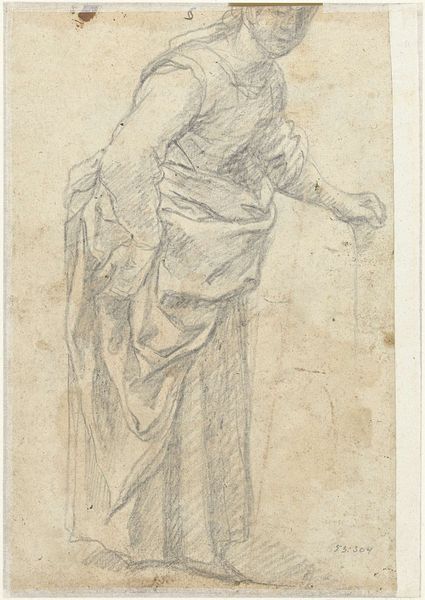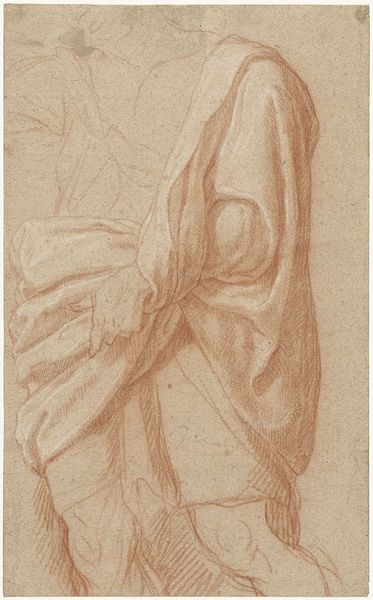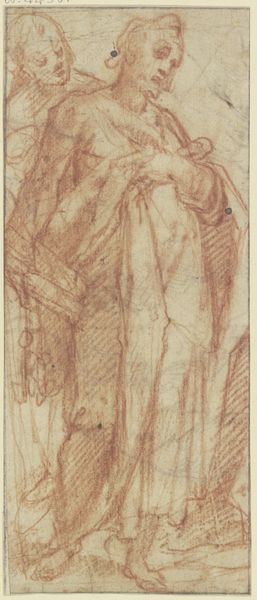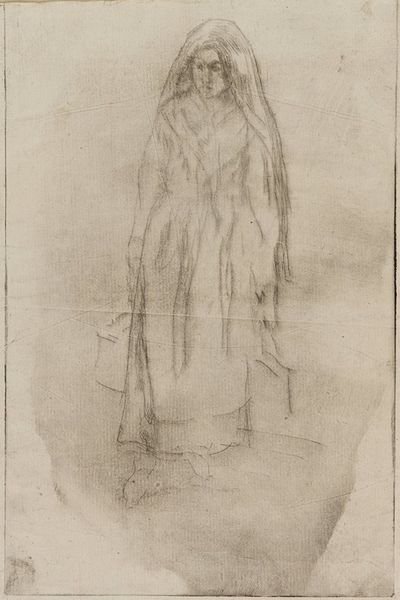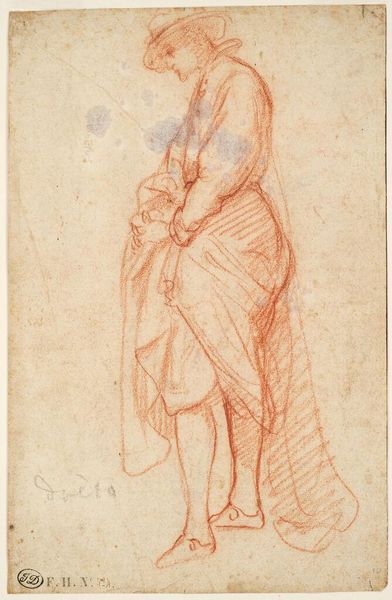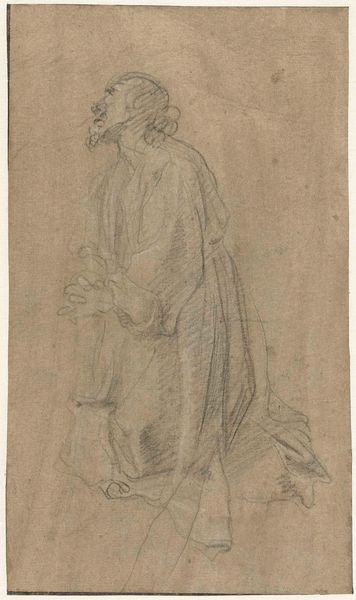
drawing, paper, pencil
#
portrait
#
drawing
#
pencil sketch
#
mannerism
#
paper
#
pencil
Dimensions: height 340 mm, width 180 mm
Copyright: Rijks Museum: Open Domain
Editor: Here we have Bernardino Poccetti’s “Studie van een staande man,” a pencil drawing on paper from 1604. It has a fleeting quality, almost like the artist was trying to capture the essence of the figure rather than precise detail. What strikes you about the formal elements of this study? Curator: Indeed. Consider how Poccetti orchestrates a complex interplay of line and form to evoke the subject. The figure is constructed not through conventional modeling but through an animated dance of marks. Do you observe the economy of means and the strategic deployment of hatching? Editor: Yes, the hatching seems to emphasize the fall of light and the contours of the cloak, especially. Is it this emphasis on line that makes it Mannerist? Curator: Precisely. This aesthetic leans into the elegant distortions and artificiality characteristic of Mannerism, setting it apart from the High Renaissance ideals of balance and harmony. The linearity of form defies traditional illusionism, almost relishing in its constructed nature. Notice the extended verticality—the elongation of the figure which draws the eye upwards. How do the textural qualities of the line contribute to your reading? Editor: That's an interesting question, because you can see the varied pressure of the pencil and the roughness of the paper, which emphasizes the immediacy of the work, but also its incompleteness. Curator: It is through these tensions—between the raw, sketch-like quality and the studied elegance of the pose—that Poccetti’s formal decisions activate the piece. It's a conversation about representation rather than a perfect representation itself. Editor: I now see the dialogue between line and form more clearly, especially how that interplay informs the artistic movement it represents. Thanks for pointing that out. Curator: My pleasure. It’s often in those quiet formal conversations that the work truly comes alive.
Comments
No comments
Be the first to comment and join the conversation on the ultimate creative platform.
